A FLEA SEEN ON YOUR DOG IS JUST THE TIP OF THE ICEBERG
A single female can lay up to 50 eggs per day. In one month, 10 females can lay up to 15,000 eggs! Your dog spreads flea eggs everywhere it goes potentially leading to a massive infestation in your home.
Your carpets, sofas, beds and the entire environment of the animal are massively infested by eggs and larvae, the seeds of future re-infestation. Thus, your pet, your family and you are exposed. Vacuuming your home will only remove 50% of eggs and larvae because they are hidden deep in floors.
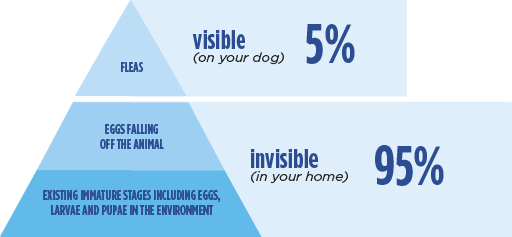
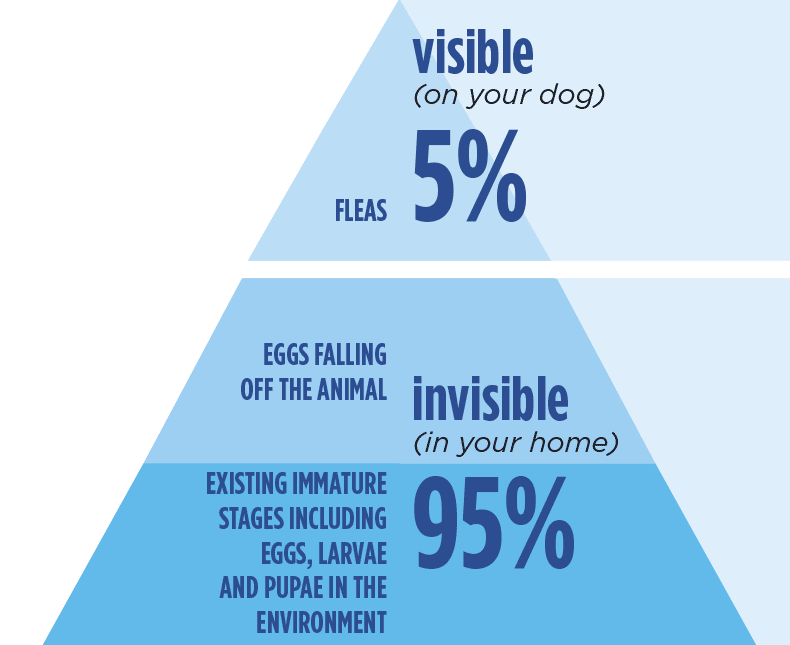
Flea Life Cycle
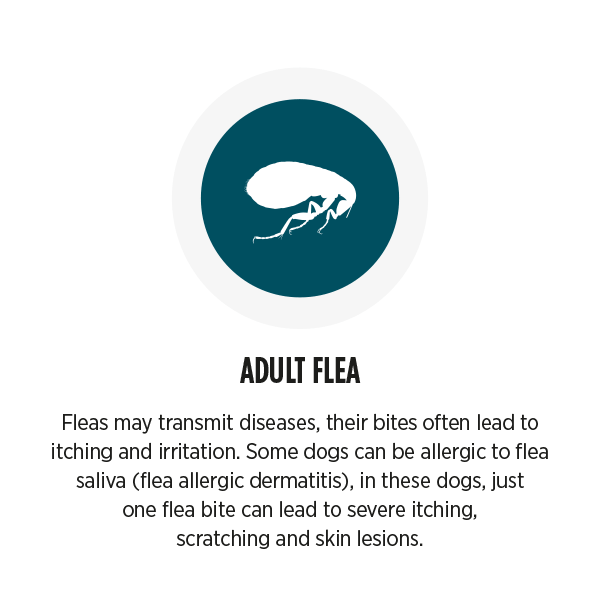
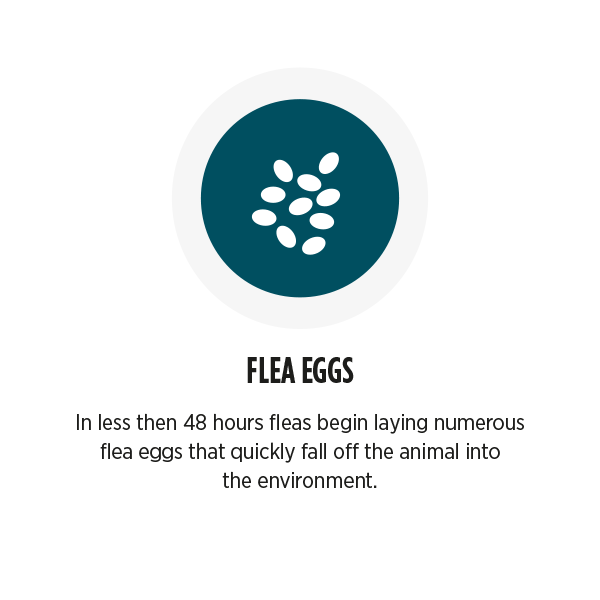
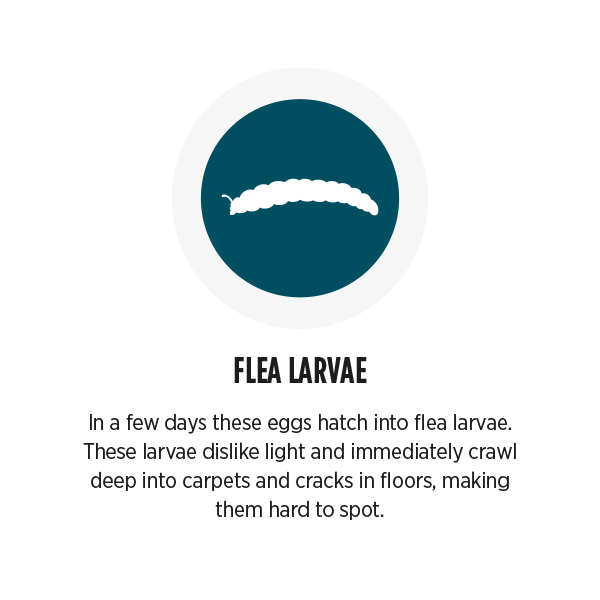
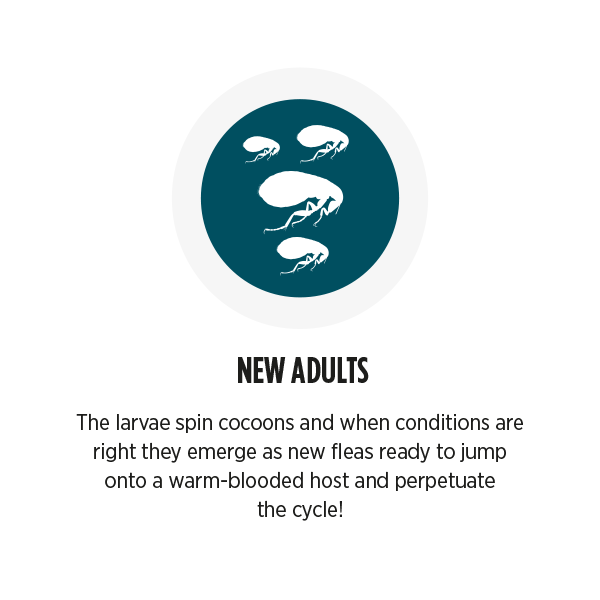


Ticks can be deadly. Discover how common they are in your area
Wherever you live in the UK there is a risk that your dog could pick up ticks. Ticks can be found in long grass, parks, meadows, woodlands and kennels. Often they will attach to your dog’s skin where the coat is thin such as around the ears or close to the ground such as on the paws. When they’ve attached they will engorge themselves on your dog’s blood causing their body to swell. During feeding ticks can transmit disease, including Lyme Disease, Anaplasmosis, Babesiosis and Ehrlichiosis. These can be a serious risk to your dog’s health.
Common ticks in the UK
The four tick species below make up 99%
of ticks that affect dogs.5
Sheep tick
(Ixodes ricinus)

of ticks affecting dogs in the UK.1
Habitat
Grassland, moorland, heath and woodland. Found in suburban and urban areas.
Disease transmission
Lyme disease and Anaplasmosis.
Hedgehog tick
(Ixodes hexagonus)

of ticks affecting dogs in the UK.2
Habitat
Parks and gardens, and even found in the urban areas.
Disease transmission
Lyme disease and Anaplasmosis.
Marsh tick
(Dermacentor reticulatus)

of ticks affecting dogs in the UK.3
Habitat
Grasslands, pastures and woodlands.
Disease transmission
Babesiosis.
Brown dog tick
(Rhipicephalus sanguineus)

of ticks affecting dogs in the UK.4
Habitat
Kennels and other sheltered places.
Disease transmission
Ehrlichiosis and Babesiosis.
THE GOOD NEWS IS THAT THERE ARE TREATMENTS THAT KILL FLEAS AND TICKS, HOWEVER, NOT ALL TREATMENTS ARE THE SAME
There are many parasiticide treatments out there: some good, some not so good. As is so often the case, you tend to get what you pay for. Seek professional veterinary advice over which product best suits your situation, your lifestyle and your dog.
When choosing a treatment, you need to consider one that:
Kills both fleas and ticks fast
Continues to kill both fleas and ticks right through the treatment period
Kills the common ticks found in the UK
Minimises the risk of a gap in protection to help stop fleas and ticks taking advantage
Ask your vet and they will advise you what treatment is most appropriate for your dog.
Brought to you by Zoetis the manufacturers of Simparica
Not all products give your Cat the protection they need, find out more about getting rock-solid flea and tick protection

To find out more about fleas and ticks visit our blog

